Quick care stats of Dwarf Seahorse – tank setup, tankmate, feeding
- Family: Syngnathidae
- Scientific name: Hippocampus zosterae
- Common name: Dwarf Seahorse
- Origin: Western Atlantic Ocean, Caribbean Sea, and the Gulf of Mexico
- Max length: 2 inches max (usually smaller)
- Minimum tank size: 5 gallons
- Stocking: 4 seahorses for a 10-gallon tank
- Temperament: peaceful
- Diet: carnivore; feed live baby brine shrimp, copepods, and other types of shrimp larvae
- Breeding: readily breed in your tank
- Habitat: tropical, shallow water, grass beds (eel) of the ocean
- Care level: difficult
- Active levels: mostly mid to upper regions of the tank
- Tank setup: a sand substrate with live plants (saltwater planted tank) or grass-like plastic plants
- Temperature: 72-78 °F (optimal 72-74 °F)
- Water parameters: sg. 1.020-1.025, pH 8.1-8.4, dKH 8-12
- Lifespan: app. 2 years in captivity
- About Dwarf Seahorses
- Tank setup, layout, and stocking
- How to buy healthy dwarf seahorses?
- Acclimating dwarf seahorse to the aquarium
- Dwarf seahorse tankmates
- Diet, foods, and feeding
About Dwarf Seahorses
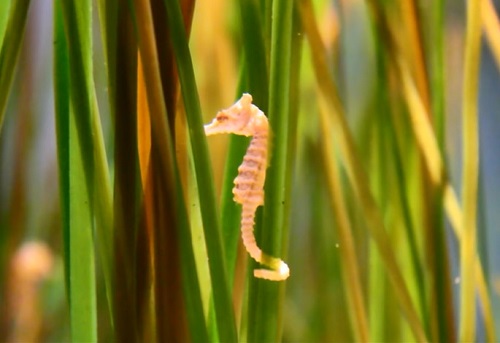
An artificial freshwater plant being used as a hitching post.
Extremely cute and so hard to resist, dwarf seahorses are not for the beginner, nor are they a spur of the moment purchase! Their care is fairly labor-intensive and involves hatching out live food on a daily basis. Please do your research and if you are not prepared to meet their needs long term, then give them a pass.
There has been quite a bit of debate on whether on not dwarf seahorses are endangered. Because of the BP oil spill in the Gulf of Mexico, the aquarium trade, storms, pollution, etc., the dwarf seahorse population appears to be on the decline. Studies are ongoing, but to date, dwarf seahorses have not been put on the endangered list.
Seahorses will readily breed in your tank and the male seahorse carries the babies. The babies are born one at a time, in approximately 10-14 days. Without the aid of a camera lens, they sort of look like mosquito larvae swimming in the water.
If you have the time to devote to their dietary needs, then dwarf seahorses make a wonderful pet! They are good-natured and peaceful; you’ll find yourself staring at them for hours. Be advised that they don’t do a whole lot (mostly they sit and wait for food to pass them by).
Tank setup, layout, and stocking
Think small! The biggest size tank you want to go with is a 10-gallon tank. This will allow room for any progeny your sea ponies may have, yet it’s still small enough to be able to snow the tank with their food. If you only have a couple of pairs of seahorses, then a 5-gallon tank will be sufficient.
Live rock can harbor animals that are detrimental to your pony’s health, so we would suggest not using it. If you must have live rock then be prepared to treat it with something like fenbendazole (brand name Panacur) or Prazipro, before adding it to the tank.
The substrate should be sand at about a one-inch depth. Live sand (in a bag, not from the beach) is okay since it does not contain any harmful parasites.
Decoration
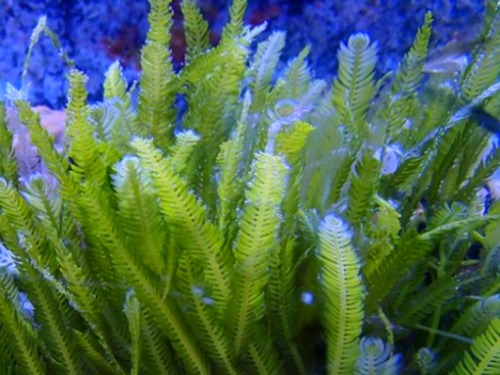
Feather Caulerpa
Your seahorse will also need plenty of appropriately sized hitching posts; these can either be live plants or artificial.
If using live plants such as Caulerpa, etc., then they too, will need to be debugged. A 30-minute freshwater bath usually does the trick or if your live rock is soaking in fenbendazole, you can throw it in there. An LED light for aquarium plants is recommended to grow the plants.
 Pen-Plax Fan Bush & Orange Betta Plant #ad
Pen-Plax Fan Bush & Orange Betta Plant #ad
You may also want to consider artificial, freshwater plants. Some of them look like they’d be right at home in the ocean and many are grass-like (perfect hitching posts).
Because the usual marine-type accouterments should not be used in a dwarf seahorse tank, let your imagination run wild! There are some very realistic-looking corals #ad out there in the market and the best part is they won’t harm your fish. If you’re more into whimsy, then there are decorations for you as well.
Heating
Heaters should be chosen with care. If you can’t locate it behind a wall of some sort, or outside the tank, then make sure that it is of a sufficient diameter so that the ponies can’t wrap their tails around it.
Water in the seahorse tank should be on the cool side (78 degrees is the absolute max and not recommended long term). Lower temps will lessen the chance of them contracting a bacterial disease. Optimum temps are between 72 to 74 degrees.
Filtration
Filtration need not be elaborate, a simple sponge filter or HOB (intake covered) works well. You don’t want a lot of flow because they are not strong swimmers and are easily buffeted about the tank.
Dwarf seahorse tanks are small and conditions can go south in a hurry, so you really need to keep up with water changes. Be prepared to perform weekly or even bi-weekly changes.
How to buy healthy dwarf seahorses?
Wild-caught or captive bred? A captive-bred seahorse is far less likely to carry disease and/or parasites. If buying wild-caught, check with the seller to make sure the seahorses they are selling have been quarantined and treated for diseases. Most reputable sellers do this as a matter of course and won’t mind your asking.
Cost: you will spend a lot more for a captive bred seahorse, but you will know what you’re getting, how old the seahorse is, etc.
Don’t believe the hype that dwarf seahorses are super easy to take care of and will be eating frozen brine shrimp in no time at all. None of it is true and you should stay away from sellers who advertise them as such.
Also of note, ask how your ponies will be shipped. It is our opinion they should only be shipped overnight. Search any of the seahorse blogs and you will read story after story of seahorses that didn’t survive the 2-3 day trip.
Acclimating dwarf seahorse to the aquarium
Seahorses are acclimated a bit differently from most fish, and here’s what’s worked well for us. The instructions were taken from several web sites that sell dwarf seahorses.
- First of all, double-check to make sure all your water parameters are within acceptable ranges.
- Next, float the bag of seahorses in the tank for approximately 10 minutes to equalize temperatures.
- Partially open the bag containing seahorses and add a cup of your tank water.
- Wait ten minutes.
- Remove one cup of water from the bag the seahorses are in and add another cup of tank water.
- Wait ten minutes
- Repeat steps 5 and 6, one more time.
- Ponies are now ready for their new home. DO NOT net the seahorses! Using your hand (yes, your hand), carefully lift them out of the bag, then gently transfer them into the tank. Discard any water that is left in the bag (this should not be put into your tank).
Dwarf seahorse tankmates
Because of their small stature, delicate nature, and dietary needs, dwarf seahorses are best kept in a tank of their own. A clean-up crew is fine; snails, mini stars, and micro hermits are all suitable choices.
For obvious reasons, most coral and fish should be avoided altogether. Even though there are some reports of pipefish and ponies being housed together, it is our opinion that the seahorses belong in a species tank only (in groups of at least 4).
If you still think you want them in a community type setup, wait until you see them in person. We believe that once you see how tiny they are and how slowly they eat, you will change your mind.
Diet, foods, and feeding
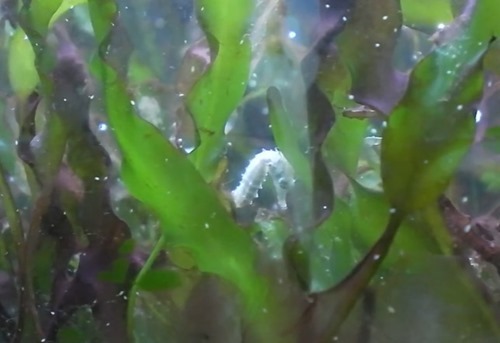
It is difficult and time-consuming to care for. If you’ve read anything at all about dwarf seahorses, then you know their diet is comprised of live baby brine shrimp, copepods, and other types of shrimp larvae.
You will need to hatch out decapsulated brine shrimp on a daily basis. It is better to use decapsulated brine shrimp for several reasons. First and foremost, decapsulated eggs are far less likely to harbor hydroids. These pests can wipe out a seahorse population in no time flat, you do not want to introduce them into your tank.
Decapsulated eggs do not have the shell/cysts which can sometimes cause mortality when ingested. Decapsulated eggs have quicker and better hatch rates. They also have a higher nutritional value. You can feed the unhatched eggs to your fresh and saltwater fish (they love them as a treat).
 Brine shrimp egg, min 80% hatch, 8 oz #ad
Brine shrimp egg, min 80% hatch, 8 oz #ad
Decapsulated eggs can be found online. We buy our eggs from Brine Shrimp Direct (link above) and have been really pleased with the hatch rate.
It is important to remember that not all decapsulated eggs are hatchable (you will need to check the description). Hatchable, decapsulated eggs will be in a brine solution (not dry, in a can). This article explains everything you need to know about hatching and enriching BBS (baby brine shrimp).
We feed our ponies twice a day, with both freshly hatched baby brine shrimp and day-old shrimp that have been enriched. We also like to give our seahorses copepods as often as possible. Their tank has a fairly good population and we seed the tank on a biweekly basis.

 Marina Plastic Hairgrass #ad
Marina Plastic Hairgrass #ad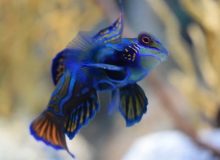
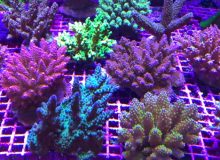
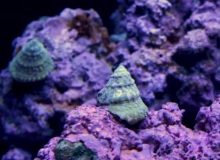
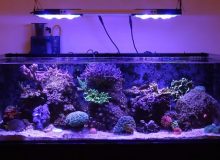
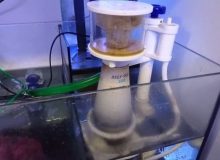
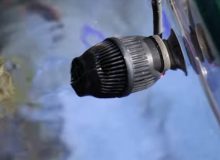
Leave a Reply